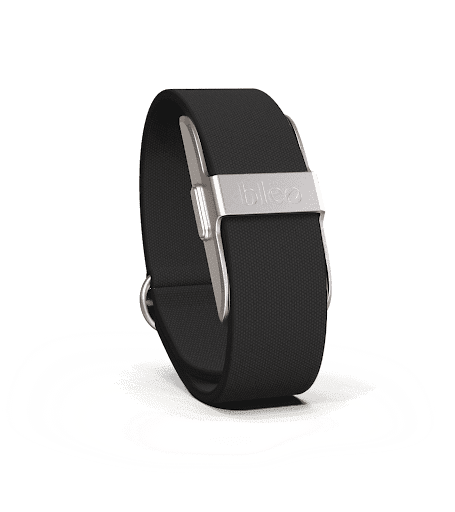In today’s fast-paced world, maintaining optimal health and fitness has become more crucial than ever. One of the most effective tools to help individuals track and improve their physical well-being is a fitness band with app support. These advanced wearable devices, paired with intelligent mobile applications, offer real-time insights into various aspects of health, making fitness monitoring accessible, accurate, and convenient.
What is a Fitness Band with App Support?
A fitness band with app support is a wearable device designed to monitor physical activity, heart rate, sleep patterns, and other health metrics. Unlike traditional pedometers or simple step counters, these devices are equipped with sensors that collect a wide array of health-related data. The collected data is then synced with a mobile application via Bluetooth or Wi-Fi, providing users with detailed insights, progress tracking, and personalized health recommendations.
The integration with an app is what distinguishes these devices from basic fitness trackers. The apps allow users to visualize trends, set goals, receive notifications, and even participate in challenges that encourage consistency and motivation.
Key Features of Fitness Bands with App Support
Modern fitness bands with app support come with a multitude of features that go far beyond counting steps. Some of the most notable capabilities include:
1. Activity Tracking
Fitness bands monitor steps, distance traveled, calories burned, and active minutes. With app integration, users can set daily or weekly goals and track progress over time, making it easier to stay consistent.
2. Heart Rate Monitoring
Continuous heart rate monitoring is one of the core features of modern fitness bands. The app can provide detailed insights, such as resting heart rate, average heart rate during workouts, and heart rate zones to optimize exercise efficiency.
3. Sleep Tracking
Sleep quality directly affects overall health and productivity. Fitness bands track sleep duration, stages (deep, light, REM), and disturbances. The connected app analyzes sleep patterns and offers personalized recommendations to improve rest.
4. Stress Monitoring
Some advanced fitness bands come equipped with sensors to detect stress levels using heart rate variability. The app can then suggest relaxation techniques or breathing exercises to help manage stress effectively.
5. Workout Modes
Fitness bands support multiple workout modes, such as running, cycling, swimming, yoga, and more. The app provides real-time metrics during exercise and analyzes performance afterward to suggest improvements.
6. Notifications and Reminders
Through app integration, fitness bands can display smartphone notifications for calls, messages, and calendar events. They can also remind users to stay active or drink water, ensuring a holistic approach to wellness.
Benefits of Using Fitness Bands with App Support
Using a fitness band with app support provides several benefits that contribute to a healthier lifestyle:
1. Personalized Fitness Insights
The data collected by the band and analyzed by the app allows for a personalized fitness experience. Users can track trends over weeks or months, identify strengths and weaknesses, and make data-driven decisions to improve health.
2. Motivation and Accountability
Visual dashboards and achievement badges within the app keep users motivated. Setting daily targets and tracking progress creates accountability, which is crucial for sustaining fitness routines.
3. Early Health Detection
Continuous monitoring of heart rate, sleep, and activity patterns can help identify anomalies that may require medical attention. Early detection of irregular heart rhythms, for instance, could be life-saving.
4. Holistic Lifestyle Management
Beyond physical activity, apps can monitor hydration, nutrition, and stress levels. This holistic approach enables users to make incremental lifestyle changes that positively affect long-term health.
Fitness Wearables for Longevity
The concept of fitness wearables for longevity is gaining significant attention in health and wellness circles. Longevity-focused wearables are designed not just to track fitness, but to extend lifespan and enhance quality of life by monitoring biomarkers associated with aging and chronic diseases.
How Wearables Promote Longevity
- Continuous Health Monitoring: Regularly tracking heart rate, oxygen saturation, sleep, and activity levels provides early warnings for potential health issues, allowing timely interventions.
- Personalized Recommendations: Apps connected to longevity-focused wearables can suggest dietary adjustments, optimal exercise routines, and stress management strategies, based on real-time physiological data.
- Behavioral Insights: Understanding personal habits and how they impact health is crucial for longevity. Fitness wearables record detailed lifestyle patterns, enabling informed behavioral modifications.
- Chronic Disease Management: Individuals with conditions like diabetes, hypertension, or cardiovascular issues benefit from wearables that monitor vitals and help manage these conditions proactively.
Examples of Longevity Metrics
Fitness wearables can track metrics that are directly linked to lifespan and overall health:
- Heart Rate Variability (HRV): Indicates autonomic nervous system health and resilience.
- Resting Heart Rate Trends: Low resting heart rate often correlates with cardiovascular health.
- Sleep Quality: Chronic sleep deficiency accelerates aging and increases risk of metabolic disorders.
- Activity Level Consistency: Maintaining regular physical activity improves longevity and reduces the risk of chronic diseases.
Choosing the Right Fitness Band with App Support
Selecting the ideal fitness band with app support depends on individual goals, preferences, and lifestyle. Here are key considerations:
1. Compatibility
Ensure the band is compatible with your smartphone’s operating system (iOS or Android) for seamless app integration.
2. Battery Life
Long battery life ensures uninterrupted tracking and minimizes the inconvenience of frequent charging.
3. Accuracy
Look for bands with precise sensors for heart rate, step count, and sleep tracking to ensure reliable data.
4. Comfort and Design
Since these devices are worn 24/7, comfort, style, and durability are important factors.
5. App Features
The app should provide clear analytics, trend visualization, and actionable recommendations tailored to your goals.
Future Trends in Fitness Wearables
The field of fitness wearables is evolving rapidly, with trends such as:
- Advanced Biomarker Tracking: Future bands may monitor blood glucose, hydration, or lactate levels.
- AI-Powered Insights: Artificial intelligence will provide predictive health analytics and personalized coaching.
- Integration with Smart Home Devices: Fitness data could sync with home ecosystems for holistic health monitoring.
- Enhanced Longevity Tracking: Wearables will increasingly focus on metrics linked to cellular health and biological aging.
Conclusion
A fitness band with app support is more than just a gadget—it is a gateway to a healthier, more informed lifestyle. With detailed monitoring, personalized insights, and real-time feedback, these devices empower individuals to take control of their well-being. Coupled with the principles of fitness wearables for longevity, they offer not only improved daily fitness but also the potential for long-term health and a higher quality of life.
By integrating technology into personal health management, we are moving toward a future where longevity, wellness, and fitness are seamlessly intertwined, making data-driven health a practical reality for everyone.





























